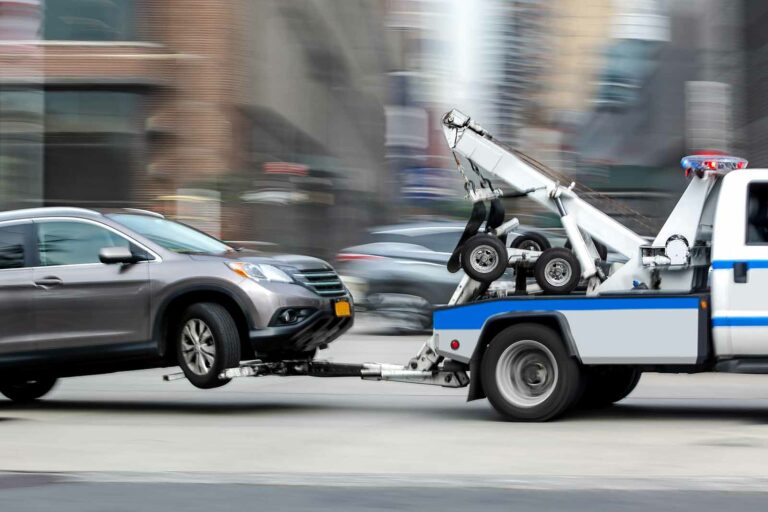Longest Lasting Car Brands: Your Ultimate Guide to Automotive Longevity
Longest Lasting Car Brands: Your Ultimate Guide to Automotive Longevity cars.truckstrend.com
In an age of rapid technological advancement and planned obsolescence, the idea of a car lasting for decades and hundreds of thousands of miles might seem like a relic of the past. Yet, for many consumers, automotive longevity remains a paramount concern. A "longest lasting car brand" isn’t just about a vehicle that merely survives; it’s about a car that reliably performs, maintains its value, and minimizes the total cost of ownership over an extended period. Investing in a long-lasting car translates directly into financial savings, reduced stress, and a more sustainable approach to personal transportation.
This comprehensive guide will delve into what makes a car brand durable, highlight the top contenders in automotive longevity, and provide actionable insights for choosing and maintaining a vehicle that stands the test of time. Whether you’re a first-time buyer, a seasoned car owner, or simply curious, understanding the hallmarks of a long-lasting car is key to making a wise and enduring investment.
Longest Lasting Car Brands: Your Ultimate Guide to Automotive Longevity
Understanding Automotive Longevity: More Than Just Miles
Automotive longevity is a multifaceted concept that goes beyond simply racking up high mileage. While a car with 200,000 miles is certainly a testament to durability, true longevity encompasses several critical factors:
- Engineering Excellence: Superior design and manufacturing processes lead to components that are inherently stronger and more resistant to wear and tear. This includes robust powertrains (engine and transmission), durable chassis, and high-quality materials throughout the vehicle.
- Reliability: A long-lasting car is one that doesn’t frequently break down or require costly, unexpected repairs. Reliability ensures the car remains operational and safe throughout its lifespan.
- Maintainability: Even the most durable car needs maintenance. Longevity is supported by accessible, affordable parts and straightforward repair processes, making it easier and less expensive to keep the vehicle in top condition.
- Rust Resistance: Especially in regions with harsh winters or coastal climates, a car’s ability to resist corrosion is crucial for its structural integrity and overall lifespan.
- Design Philosophy: Brands prioritizing simplicity, proven technology, and meticulous quality control often produce vehicles that outlast those filled with cutting-edge but unproven complexities.

It’s important to distinguish between initial quality (how few defects a car has when new) and long-term reliability (how well it holds up over many years and miles). While related, a car might have a few quirks when new but prove incredibly durable over time, and vice-versa.
Top Contenders: The Brands That Endure

Based on extensive data from consumer reports, automotive studies, and owner testimonials, several brands consistently rise to the top when it comes to longevity and reliability. These brands have built a reputation for producing vehicles that not only last but do so with minimal fuss and expense.
- Toyota: Consistently ranked at the very top, Toyota is synonymous with reliability and longevity. Models like the Camry, Corolla, RAV4, and Highlander frequently exceed 200,000 miles with proper maintenance. Their conservative engineering, rigorous quality control, and widespread availability of parts contribute to their enduring appeal.
- Honda: Another Japanese powerhouse, Honda mirrors Toyota’s commitment to durability. The Civic, Accord, CR-V, and Odyssey are celebrated for their dependable engines, robust transmissions, and excellent build quality. Honda’s VTEC engines, in particular, are known for their long-term performance.
- Lexus: As Toyota’s luxury division, Lexus inherits the parent company’s legendary reliability but elevates it with premium materials and refinement. Lexus vehicles, especially the ES, RX, and LS models, are frequently cited as the longest-lasting luxury cars, often reaching high mileages with minimal issues.
- Acura: Honda’s luxury brand, Acura, also benefits from a strong foundation of engineering excellence. Models like the TLX, MDX, and RDX offer a blend of performance and durability that allows them to remain on the road for extended periods, providing a luxurious experience without the typical high maintenance costs of some European luxury marques.
- Subaru: Known for its standard Symmetrical All-Wheel Drive system, Subaru has gained a reputation for building tough, reliable vehicles that perform well in diverse conditions. The Forester, Outback, and Crosstrek are popular choices for their durability, especially their boxer engines which, with proper care, can last a very long time.
- Mazda: In recent years, Mazda has significantly improved its reliability and build quality, earning high marks for longevity. Their Skyactiv technology focuses on efficiency and durability, and models like the Mazda3 and CX-5 are increasingly recognized for their robust engineering and enjoyable driving dynamics that stand the test of time.
- American Trucks (Ford F-Series, Chevrolet Silverado, Ram): While perhaps not in the same category as sedans and SUVs for urban dwellers, full-size pickup trucks from Ford, Chevrolet, and Ram are legendary for their workhorse durability. Many examples of these trucks routinely surpass 250,000 miles, especially when used for towing and hauling, proving their heavy-duty components are built to last.

These brands often prioritize practical, proven designs over cutting-edge, complex systems that might be prone to failure. Their success lies in consistent quality and a focus on core automotive functions.
Beyond the Badge: Factors Influencing a Car’s Lifespan
While choosing a brand known for longevity is a great start, a car’s actual lifespan is significantly impacted by how it’s treated and maintained. Your actions as an owner are just as crucial as the manufacturer’s engineering.
- Diligent Maintenance: This is perhaps the single most important factor. Adhering to the manufacturer’s recommended service schedule for oil changes, fluid flushes (transmission, brake, coolant), filter replacements, and tire rotations can prevent minor issues from escalating into major problems.
- Driving Habits: Aggressive driving (hard acceleration, sudden braking, high-speed cornering) puts immense strain on a vehicle’s components. Gentle, consistent driving significantly reduces wear and tear on the engine, transmission, brakes, and suspension. Avoiding short trips where the engine never fully warms up also helps prevent carbon buildup and premature wear.
- Environmental Conditions: Exposure to extreme temperatures, road salt, and excessive humidity can accelerate corrosion and degrade components. Regular washing, especially the undercarriage in winter, can mitigate salt damage. Parking in a garage also offers protection.
- Prompt Repair of Minor Issues: Ignoring a check engine light, a strange noise, or a minor leak can lead to catastrophic failures down the line. Addressing small problems quickly is often less expensive and prevents cumulative damage.
- Quality of Parts and Fluids: Using manufacturer-recommended or high-quality aftermarket parts and fluids (oil, coolant, brake fluid) ensures optimal performance and longevity. Cheaper alternatives might save money in the short term but can lead to long-term issues.
- Proper Storage: Protecting your vehicle from the elements when not in use, ideally in a garage, can prevent sun damage to paint and interior, and reduce exposure to moisture that causes rust.
The Financial & Practical Benefits of Owning a Long-Lasting Car
The decision to invest in a long-lasting car brand yields substantial returns beyond just transportation.
- Lower Total Cost of Ownership (TCO): While the initial purchase price might be similar to a less durable car, the long-term savings are significant. Fewer repairs, lower depreciation, and extended use mean less money spent over the car’s lifetime.
- Higher Resale Value: Vehicles known for their longevity and reliability tend to hold their value better. When it’s time to sell, a well-maintained car from a reputable brand will command a higher price, recouping more of your initial investment.
- Reduced Stress and Inconvenience: Fewer breakdowns mean less time spent at the mechanic, less worry about getting stranded, and more reliable daily transportation. This peace of mind is invaluable.
- Environmental Impact: Keeping a car for longer reduces its carbon footprint. Manufacturing new vehicles is resource-intensive, so extending the life of an existing one lessens demand for new production and reduces automotive waste.
- Personal Connection and Familiarity: For many, a long-lasting car becomes more than just a machine; it’s a trusted companion. Familiarity with its quirks and capabilities enhances the driving experience.
How to Choose a Long-Lasting Car (New & Used)
Selecting a car with longevity in mind requires diligent research and a discerning eye.
For New Cars:
- Research Reliability Ratings: Consult reputable sources like Consumer Reports, J.D. Power, and RepairPal for long-term reliability and owner satisfaction scores.
- Focus on Proven Powertrains: Look for models with engines and transmissions that have been in production for several years with a good track record, rather than brand-new, unproven designs.
- Prioritize Simplicity: While modern cars are complex, often the models with fewer cutting-edge, experimental technologies tend to be more reliable in the long run.
- Consider Parts Availability and Cost: Brands with a widespread dealer network and easily accessible, affordable parts will be cheaper and easier to maintain over time.
- Read Owner Reviews: Check forums and owner groups for common long-term complaints or recurring issues that might not show up in initial reliability surveys.
For Used Cars:
- Thorough Pre-Purchase Inspection (PPI): Have an independent mechanic inspect the vehicle thoroughly, even if it seems perfect. They can spot hidden issues.
- Review Service History: A complete service history indicates consistent maintenance, a strong predictor of longevity. Look for records of regular oil changes, fluid flushes, and major service intervals.
- Check for Rust: Pay close attention to the undercarriage, wheel wells, door sills, and around windows for signs of rust, which can compromise structural integrity.
- Test Drive Extensively: Listen for unusual noises, feel for vibrations, and test all features. A long test drive on various road types can reveal hidden issues.
- Verify Mileage and Ensure the mileage is accurate and the title is clean (not salvage, rebuilt, or flood damaged).
Maximizing Your Car’s Lifespan: A Practical Guide
Once you’ve chosen a long-lasting car, it’s up to you to ensure it lives up to its potential.
- Follow the Maintenance Schedule Religiously: This is non-negotiable. Don’t skip oil changes, tire rotations, or fluid flushes. Use the owner’s manual as your bible.
- Address Warning Lights Promptly: A check engine light or any other warning indicator is your car’s way of telling you something is wrong. Don’t ignore it; get it diagnosed and fixed.
- Keep it Clean, Inside and Out: Regular washing, especially in winter, removes corrosive elements. Interior cleaning prevents degradation of materials.
- Drive Smoothly and Defensively: Avoid aggressive acceleration, hard braking, and fast turns. Anticipate traffic and maintain a safe following distance.
- Check Fluids Regularly: Even between service intervals, periodically check engine oil, coolant, brake fluid, and power steering fluid levels.
- Maintain Proper Tire Pressure: Correct tire pressure not only improves fuel economy but also reduces wear on tires and suspension components.
- Listen to Your Car: Pay attention to new noises, vibrations, or changes in performance. These are often early indicators of developing problems.
- Use Quality Fuel and Parts: Opt for the recommended octane fuel and genuine or high-quality aftermarket parts when replacements are needed.
Challenges and Considerations
While the benefits of long-lasting cars are clear, there are some challenges and considerations to keep in mind:
- Initial Purchase Price vs. Long-Term Savings: Sometimes, the most durable brands might have a slightly higher initial purchase price, but this is usually offset by lower depreciation and reduced maintenance costs over time.
- Technology Obsolescence: While the mechanicals might last, the infotainment systems, navigation, and driver-assist technologies in older vehicles can become outdated, slow, or unsupported, impacting the overall user experience.
- Emissions Regulations: As cars age, meeting increasingly stringent emissions standards can become a challenge, potentially requiring costly repairs to catalytic converters or other components.
- Availability of Specialized Mechanics: For very old or niche models, finding mechanics familiar with their specific issues and having access to parts can become more difficult.
- Balancing Longevity with Evolving Needs: While a car might be mechanically sound, your lifestyle, family size, or daily commute might change, making a perfectly functional vehicle less suitable for your current needs.
Comparative Overview of Longest-Lasting Car Brands
| Brand | Key Models Known for Longevity | Average Lifespan Potential (Miles) | Typical Maintenance Philosophy | General New Car Price Range (USD) | Key Reason for Longevity |
|---|---|---|---|---|---|
| Toyota | Camry, Corolla, RAV4, Highlander | 200,000 – 300,000+ | Conservative, readily available parts | $23,000 – $50,000 | Legendary reliability, quality control, simple designs |
| Honda | Civic, Accord, CR-V, Odyssey | 200,000 – 275,000+ | Robust engineering, dependable powertrains | $22,000 – $45,000 | Durable engines, excellent build quality, low repair costs |
| Lexus | ES, RX, LS | 250,000 – 300,000+ | Premium quality, refined Toyota reliability | $40,000 – $80,000+ | Exceptional build quality, minimal issues, luxury comfort |
| Acura | TLX, MDX, RDX | 200,000 – 275,000+ | Reliable Honda foundation, performance focus | $35,000 – $60,000 | Robust engines, high-quality components, strong resale |
| Subaru | Forester, Outback, Crosstrek | 200,000 – 250,000+ | Tough AWD systems, durable boxer engines | $25,000 – $40,000 | Resilient powertrains, go-anywhere capability, safe design |
| Mazda | Mazda3, CX-5, CX-9 | 175,000 – 225,000+ | Skyactiv technology, improved build quality | $22,000 – $40,000 | Focus on driving dynamics, robust engines, modern reliability |
| American Trucks | Ford F-Series, Chevy Silverado, Ram | 250,000 – 350,000+ | Heavy-duty components, widespread service | $35,000 – $70,000+ | Built for work, strong frames, large displacement engines |
Note: Lifespan potential is an average and can vary significantly based on individual maintenance, driving habits, and environmental factors. Price ranges are approximate for new models and can vary widely based on trim, options, and location.
Frequently Asked Questions (FAQ)
Q1: Is a luxury car more likely to last longer than a non-luxury car?
A1: Not necessarily. While luxury cars often use high-quality materials, their complex electronics and specialized components can be very expensive to repair when they do fail. Brands like Lexus and Acura, which are luxury divisions of highly reliable mainstream brands (Toyota and Honda, respectively), tend to be exceptions, offering both luxury and exceptional longevity.
Q2: How many miles is considered "long-lasting" for a car?
A2: Generally, a car that reliably reaches 150,000 to 200,000 miles is considered long-lasting. Many of the top brands mentioned in this article frequently exceed 250,000 miles, with some even reaching 300,000+ with diligent maintenance.
Q3: Does electric car longevity differ from gasoline cars?
A3: Electric vehicles (EVs) have fewer moving parts, which theoretically could lead to greater longevity for the drivetrain itself. However, battery degradation over time is a factor, and the long-term reliability and repair costs of other EV components (like advanced electronics) are still being fully understood as the technology matures.
Q4: Can any car last a long time with proper maintenance?
A4: While proper maintenance can significantly extend the life of any car, some vehicles are inherently designed and built with greater durability. A poorly engineered car will likely still have a shorter lifespan and more frequent issues, even with meticulous care, compared to a well-engineered one.
Q5: What’s the single most important factor for car longevity?
A5: While engineering and build quality are foundational, consistent and proactive maintenance by the owner is arguably the single most important factor that dictates a car’s actual lifespan. Even the best-built car will fail prematurely without proper care.
Q6: Do specific car types (SUV, sedan, truck) last longer?
A6: Longevity is more brand and model-specific than tied to a general car type. However, full-size trucks are often built with heavy-duty components designed for demanding work, giving them a reputation for lasting hundreds of thousands of miles. Sedans and SUVs from reliable brands also show excellent longevity.
Conclusion
Choosing a long-lasting car brand is one of the smartest decisions a vehicle owner can make. It’s an investment in reliability, financial stability, and peace of mind. While brands like Toyota, Honda, and their luxury counterparts Lexus and Acura consistently lead the pack, true automotive longevity is a partnership between the manufacturer’s commitment to quality and the owner’s dedication to proper care. By understanding the factors that contribute to durability, making informed choices, and committing to a rigorous maintenance schedule, you can ensure your vehicle not only transports you reliably for years to come but also becomes a testament to enduring value. In a world of fleeting trends, a long-lasting car stands as a solid, dependable asset.






